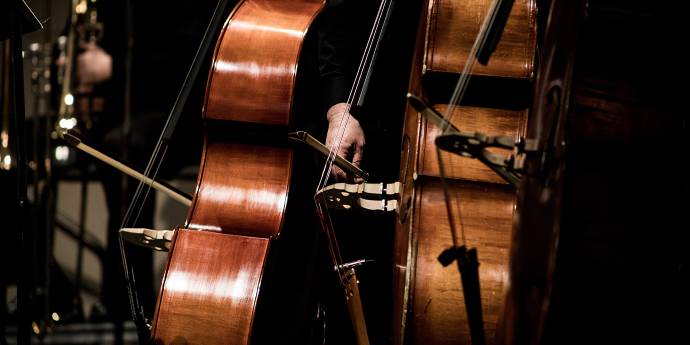Rethinking fees and levies: The case for balance and fairness
The IoD’s submission on MBIE’s review highlights pressure on not-for-profit boards and calls for fairer funding of enforcement activity.

Emeritus Professor Peter Walls ONZM, CMInstD on governance in the performing arts.
A board appointment in a performing arts company can bring satisfaction of quite a special kind – but with that come distinctive challenges.
Performing arts companies are not-for-profit (NFP) organisations. The idea of “for purpose” is gaining ascendancy over “not for profit” since, quite properly, it puts the focus on non-financial outcomes – the good works achieved by the company.
I want to put “for purpose” to one side for a moment and face up to the stark financial reality of being an NFP. As a broad class, NFPs encompass very different business models. A humanitarian charity raises funds and distributes them. Performing arts companies, on the other hand, operate as businesses – but businesses with no margins. A zero bottom-line is a relief, not a disappointment. The ideal yearend result is a modest surplus achieved by keeping three interlocking income streams in balance: sales; sponsorship/community grants/donations; and government funding.
A focus on healthy sales is where performing arts companies most resemble other businesses with a retail dimension. Incidentally, concerts – certainly symphonic concerts – cannot be sustained by box office alone. Sir Selwyn Cushing, a former NZSO Chair, used to joke that orchestras work by reverse business logic – the more you do, the harder it gets.
Sales are crucially important. The revenue matters in itself, but it also provides reassurance to government funders of demand for the outcomes that they support and is a critical tool in persuading sponsors that their funds are well invested – that through their sponsorship they can engage with a sufficient and relevant market.
A lot of work goes into calculating expected audience levels – but this can’t be an exact science. A spectacular example of miscalculation occurred on my watch with NZSO. We’d engaged Burt Bacharach for a tour that would begin with what was to have been the first concert in Auckland’s Vector Arena. There were construction problems so we had to move to the Aotea Centre. Next, Bacharach had to withdraw because of an injury. We booked Dionne Warwick but sales flatlined. We ended the tour $30,000 short of target. In this case, there was a happy ending. Our first classical subscription tour that year was with Dame Kiri Te Kanawa as soloist. Kiri’s tour ended $30,000 ahead of budget.
I learned a lot from it – mostly not to risk your shirt on activity that might be perceived as not central to the organisation’s mission.
The difference between sponsorship and philanthropy is perhaps not well enough understood. Sponsorship involves a business transaction in which the sponsor offers cash and/or contra (sponsorship in kind) to the arts company in return for a range of benefits (such as brand exposure, ticket allocation, hosting opportunities for clients plus a few intangibles such as the chance to make connections with other sponsors or the government as funder). The value placed on the benefits offered to the sponsor should be at least be equal to the value of the sponsorship itself.
A happy alignment between a sponsor’s interests and the arts company can be the catalyst in creating something new and immensely valuable. In the early 2000s, Wrightson’s (rural services providers) were principal sponsors of the NZSO. The “Wrightson’s Tours” allowed the NZSO to visit regional centres and, for their part, Wrightson’s got better engagement with their clients than through some of their rural event sponsorships thanks to the appeal of symphonic concerts to farmers’ wives. The synergies were surprising, perhaps, but very real.
Such a scenario means that the financial responsibilities of arts company boards require sound judgement and steady nerves. Sailing close to the wind is built into the no-margins business model.
A marketing sponsorship with a substantial contra element commits the organisation to allocating a fixed amount of its marketing budget to the sponsoring organisation. If, for example, the percentage of the marketing budget that must be committed to, say, a newspaper group increases, that effectively reduces the flexibility to alter the balance between one marketing channel and another.
All arts companies depend on gaming trusts. These trusts make great things possible. The gaming trust system is, however, ridiculously inefficient. Every arts company in New Zealand invests human resource in just keeping up with the treadmill of applications (and reconciliations) – many for small grants that will, nevertheless, make the difference when it comes to staying on the right side of zero at year end.
What concerns me more than the inefficiency of the system is the fragility of this funding in the medium term. Gaming trusts are grappling with sinking-lid policies being adopted by local authorities. Such policies recognise that pokies are a contributor to problem gambling.
From a governance perspective, there are two issues here. The first is a practical one. How do we ensure that development funding for the arts company does not decline? But the second is ethical. How do we feel about the arts being so reliant on gaming?
The final component of development funding is philanthropy – generous people who support the arts, sometimes through their private trusts and foundations (such as the Wallace Arts Trust, the Adam Foundation, the Turnovsky Endowment Trust, and the Deane Endowment Trust). We couldn’t do without them. One private donor regularly covers the cost of bringing children from low-decile schools to Chamber Music New Zealand’s education concerts. There are countless examples of this sort.
Government funding comes with an expectation that it will supplement earned revenue and development funding at appropriate levels. Such a scenario means that the financial responsibilities of arts company boards require sound judgement and steady nerves. Sailing close to the wind is built into the nomargins business model.
Acting as custodians of an important art form, encouraging innovation, and promoting diversity are all complicated by the constraints of the financial model. It is worth noting in passing the extent to which arts companies are price takers: venue costs, marketing costs, and people costs rise inexorably at rates that cannot be wholly recovered through adjustments to ticket pricing.
Arts companies are answerable to two masters: their boards and their core government funder. Each of these imposes significant reporting requirements. While there is overlap, the governing body and the funder have distinctly different interests and strategic priorities. It would be fair to say, by and large, that the starting point for board members is an appreciation of the intrinsic value of the art form while the Ministry of Culture and Heritage or Creative NZ begin with a desire to maximise the social benefits of the art form. There is no conflict between the two, but there is nevertheless a kind of natural tension.
A typical board member needs no convincing of the importance of the art form and its capacity to enrich lives. They are not embarrassed about their love for classical music and they are strongly supportive of education and outreach programmes that unlock this for young people regardless of cultural or ethnic background. Almost all will have been invited to join the board because of critical supporting expertise – financial, perhaps, or connectivity in the business world that can be so valuable in nurturing sponsorships. One of the important things about classical music is that it is not the property of any single culture or ethnicity. It crosses boundaries – happily. Some of its greatest exponents are not ethnically from the Western tradition: Seiji Ozawa, Lang Lang, the Palestinians in Barenboim’s East/West Divan Orchestra, Wilma Smith, Jonathan Lemalu, Kiri… the list could go on. But the capacity of what looks a conservative art form to transform young New Zealanders’ lives and horizons does not appear to be front-of-mind for government funders. It is becoming harder to argue the case for classical music, opera, ballet.
We need to recognise vulnerabilities in the current model for sustaining arts organisations in Aotearoa.
1. What if there were a failure (even a temporary failure) of government resolve to support quality professional classical music, or if the need to prioritise other kinds of artistic endeavour restricts government funders’ capacity to continue this support at the levels required?
2. What if ethical concerns over problem gambling were to lead to diminished, or even eliminated, of funding from the Lotteries Board and from gaming trusts?
3. What if a downturn in business confidence were to further reduce the contribution of corporate sponsorship to the arts?
These are questions that will be in the minds of arts company boards. All arts company boards see ensuring long-term sustainability as a primary responsibility.
Emeritus Professor Peter Walls ONZM, CMInstD was chief executive of the NZSO from 2002 until 2011 and of Chamber Music New Zealand 2014-2019. He was deputy chair of the NZSO board from 1996-2002 and has served on numerous other arts boards. He is currently a trustee of the Chamber Music New Zealand Foundation and chairs SOUNZ and the Lilburn Residence Trust. He was on the Health Sponsorship Council 2008-2012 and the Victoria University Council from 2013-2015 (Pro Chancellor in 2015).
This article is featured in Boardroom April May 2020 issue
